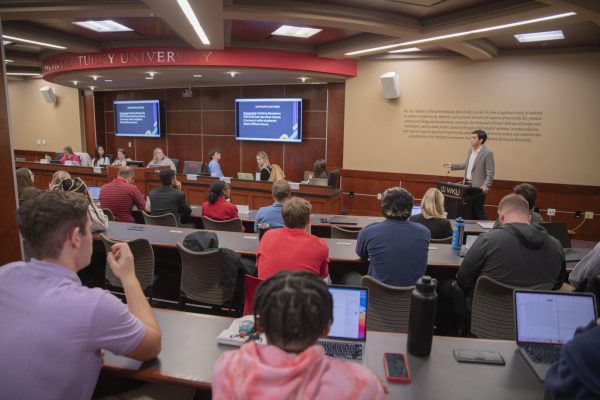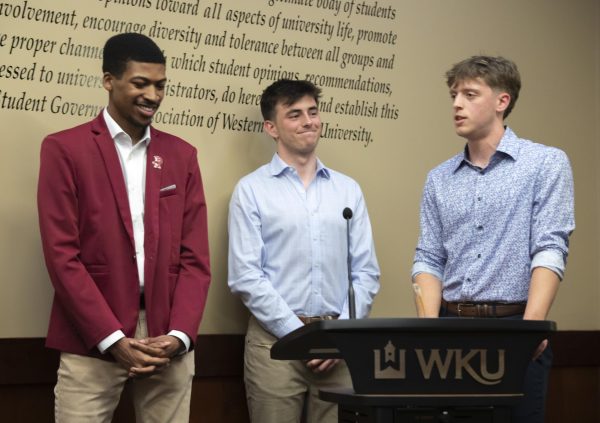Corvette Museum celebrates 20 years
September 2, 2014
A simple brand name served as a unity point this past week.
Several thousand people descended upon Bowling Green Wednesday through Saturday to celebrate the 20th anniversary of the National Corvette Museum.
The museum, located off of Interstate 65, is a shrine to the American sports car. Guests came and looked at more than 70 sleek cars, which are scattered sporadically inside and outside of the building while learning a little bit about the brand itself. The building is about a mile away from the Bowling Green Assembly Plant, where the Corvettes are made.
Numerous Corvette-related seminars were held during the three-day event, including a lecture by Jason Polk, assistant professor of Geosciences, on how sinkholes are formed.
Polk said sinkholes aren’t just defined by holes in the ground, but can be a small depression in the ground.
During his lecture, Polk displayed a partial aerial map of Bowling Green which highlighted areas where sinkholes were found. The map contained more than 100 sinkholes.
“They’re really common in this area,” he said.
The museum made international headlines in February when a sinkhole formed in the Skydome, a spiral dome building connected to the museum. Eight cars were swallowed, including a 1993 40th anniversary Corvette, and the 1 millionth Corvette produced, a white 1992 convertible.
Several WKU faculty assisted in assessing the damage when the sinkhole formed.
On Saturday, the Board of Directors for the Corvette Museum voted to fill the 45-feet wide, 60-feet long and 30-feet deep hole. The sinkhole, which has become an attraction, would be too expensive to keep open, according to a press release.
“We really wanted to preserve a portion of the hole so that guests for years to come could see a little bit of what it was like, but after receiving more detailed pricing, the cost outweighs the benefit,” Corvette Museum Executive Director Wendell Strode said in a press release.
Museum visitation has increased nearly 70 percent since the sinkhole formed.
The sinkhole repairs will begin in November and will take around six months to complete. Guests will be able to watch the repairs through a Plexiglas wall.
All of the cars were pulled out of the sinkhole in the months following its formation. Chevrolet will restore the 2009 Corvette ZR1 prototype, known as the “Blue Devil,” and the 1 millionth Corvette made. The National Corvette Museum will restore the 1962 Corvette with money provided by Chevrolet. The other five cars are too damaged to be restored, but will be put on display in the museum.
The sinkhole was not the only attraction for the museum this week. The National Corvette Museum Motorsports Park opened Thursday. The idea to implement the track occurred in 2007 according to its website. The 184-acre park, located across from the museum, contains a 3.15 mile road course and will primarily be used for both driving education and recreational purposes.


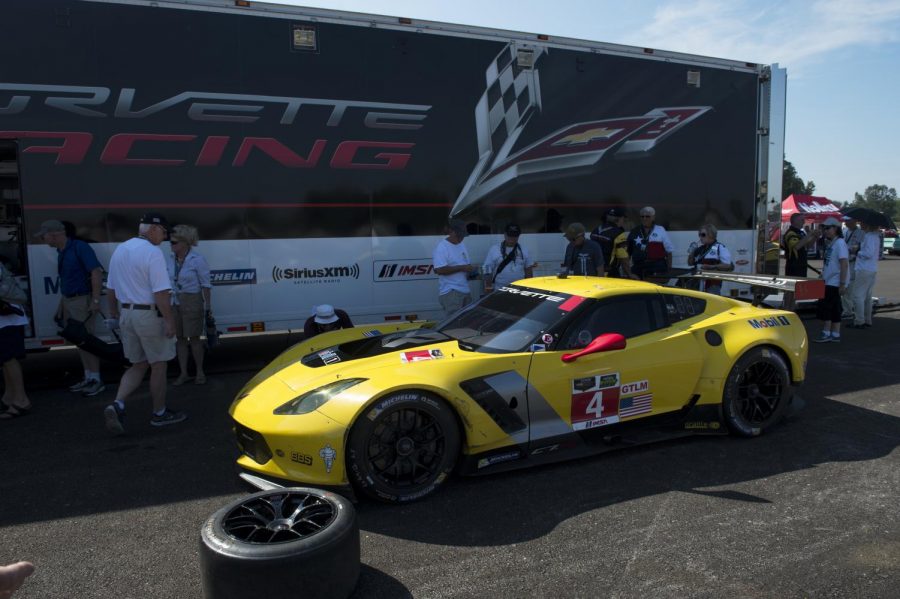










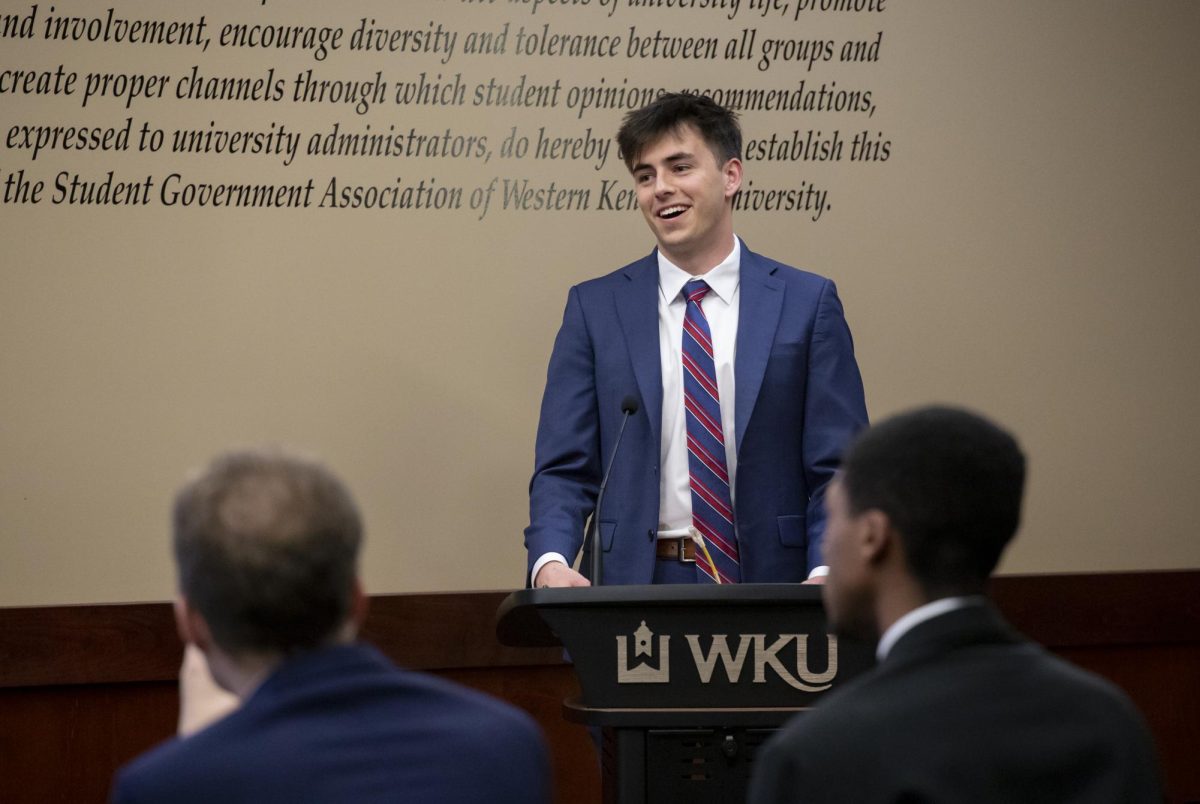
![Students cheer for Senator at Large Jaden Marshall after being announced as the Intercultural Student Engagement Center Senator for the 24th Senate on Wednesday, April 17 in the Senate Chamber in DSU. Ive done everything in my power, Ive said it 100 times, to be for the students, Marshall said. So, not only to win, but to hear that reaction for me by the other students is just something that shows people actually care about me [and] really support me.](https://wkuherald.com/wp-content/uploads/2024/04/jadenmarshall-1200x844.jpg)
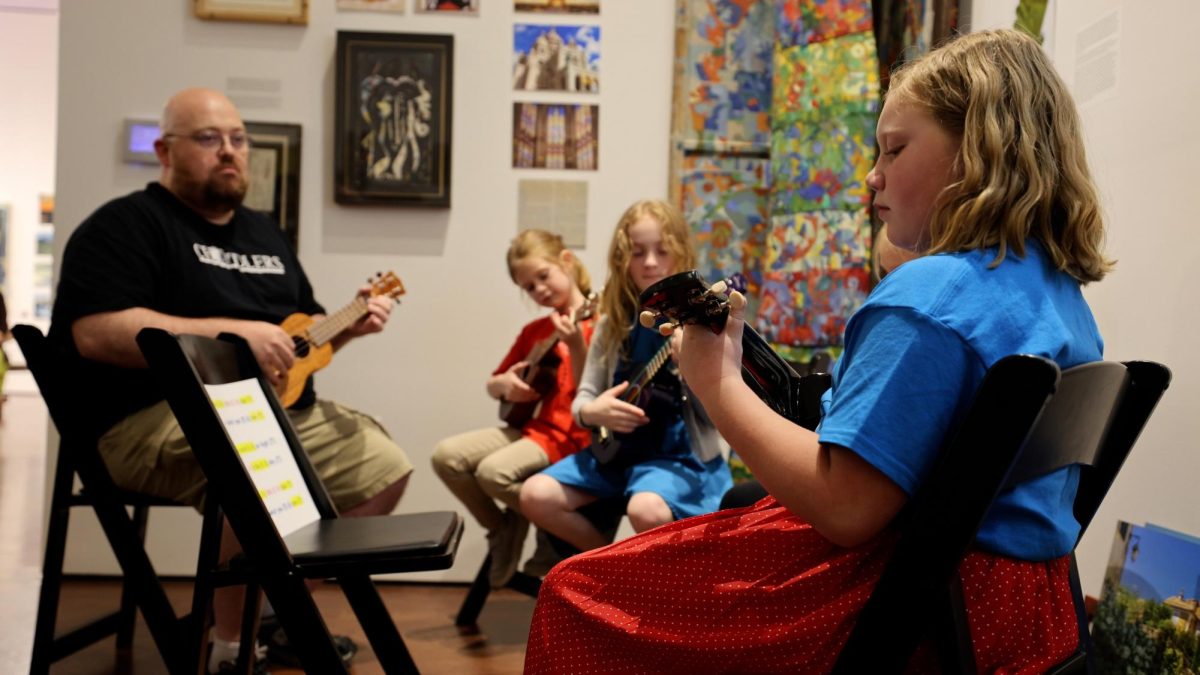

![Students cheer for Senator at Large Jaden Marshall after being announced as the Intercultural Student Engagement Center Senator for the 24th Senate on Wednesday, April 17 in the Senate Chamber in DSU. Ive done everything in my power, Ive said it 100 times, to be for the students, Marshall said. So, not only to win, but to hear that reaction for me by the other students is just something that shows people actually care about me [and] really support me.](https://wkuherald.com/wp-content/uploads/2024/04/jadenmarshall-600x422.jpg)





